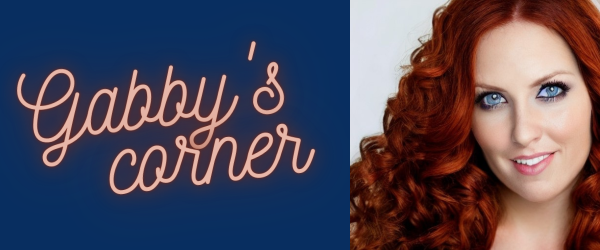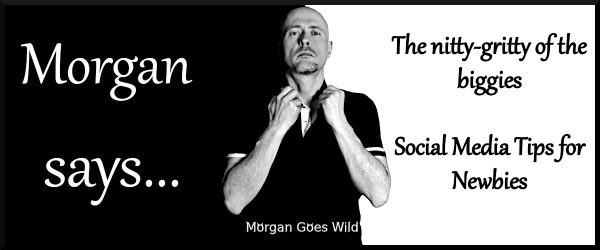As a purveyor of goods and services, your business relies on drawing in clients who will exchange money for those goods and services. Humans are visual creatures. The more eyes you can get on your work, the more sales you make, so the way you present yourself and your business visually online is a vital component of business success.
I’m going to cover a few of the basic aspects of visual design and how they contribute to a strong and effective visual brand identity.
Contrast
Contrast is one of the principles of design, the technical aspects that make designs work effectively. It helps create what’s called “visual hierarchy,” which establishes where your audience is likely to look first and the path their eyes with follow through the visual space. It tells the audience which pieces of information are most important. Those should be the elements that stand out the most, those with the highest contrast – biggest, boldest, most vividly colored – so that they draw the eye first.
You’re probably used to thinking of contrast in terms of value — relative darkness or lightness — if you do a lot of image editing or color correcting in videos. Contrast, however, can be applied to nearly all the elements we’re about to discuss and is a huge part of how effective your brand is at visual communication.
Logos: Line & Shape
Line and shape are relevant to any logo you use, as well as the typographical aspects of your brand.
Your logo is the cornerstone of your brand’s identity, the thing people see and immediately connect to the content they like. You’ll need to consider curved versus angled lines, geometric versus organic shapes and abstract versus representative imagery depending on the visual message you want your logo to convey.
Remember: A significant portion of your audience are going to be accessing your content from their phones. So, make sure to take into account that phone screens are small.
Whatever you choose, logos should be clean and simple (for legibility) and distinct enough from those of others in the industry that your customers can always pick it out even at minuscule sizes. Once you’ve got your logo, cleaning up the art or tweaking the colors is fine, but avoid major changes until you have a well-enough established customer base that they’ll be able to follow even if your visual identity is completely different.
Fonts are also important. Pick a few fonts, and stick with them – two, three at most. A nice, clean sans serif is best for longer sections of text, like the one this article uses. (Serifs are the little “feet” on the letters in fonts like Times New Roman. At smaller sizes, they can make blocks of text harder to read.)
A serif or decorative font works best for larger text like headlines or text-based logos. Just make sure it’s legible and looks good with your main font. Variation in line weight (thickness) is another important consideration here in order to create contrast between bold versus regular text.
Image via Insta here.

Messaging via Color & Value
Because color is huge component of visual language, it will influence the associations people seeing your brand for the first time make in their brains. In this instance, color refers specifically to hue, aka position on the color wheel.
The colors you use should become your colors, like Starbucks green or Facebook blue, so pick ones you won’t get tired of looking at anytime soon — you’ll be using them for everything. A limited color palette is a must – it makes consistency is easier to achieve and brand recognition is stronger. Three or four colors, not including black and white, is ideal.
Value will change the visual message of your image just as much as changing the hue does. Darker colors draw the eye first because they “jump forward” while lighter colors recede into the background. Make sure there is some value contrast in your color palette, and take advantage of it.
There are a few standard types of color schemes that tend to produce limited palettes whose colors work well together. Consider this if you’re not sure about your colors. You can do some research on color theory in marketing, but it’s equally important to trust your own gut. If the vibes aren’t right or you think the colors are just ugly, go in a direction that feels better to you.
You’re aiming for four key features, which will make for stronger brand recognition:
1. recognizability
2. reproducibility
3. clarity
4. legibility
So, ultimately, keep it simple, and stick with your choices. Consistency is key, so that each time a potential client sees your brand, they recognize it as you, and go to your sites and give you money.
Make sure your brand identity is as strong as it can be, and go get that paper!
Image via Insta here.

—
Monday Lovelace is a queer Black writer and graphic designer out of the Pacific Northwest. They’re out here to live their best life and help others do the same. Contact Lovelace via monday@ynotcam.com.
Header image via Unsplash here.











[…] way you ensure consumer recognition is consistency! This is absolutely critical for marketing and brand identity design. Brand recognition is part of how you turn first time viewers into repeat clients, and recognition […]